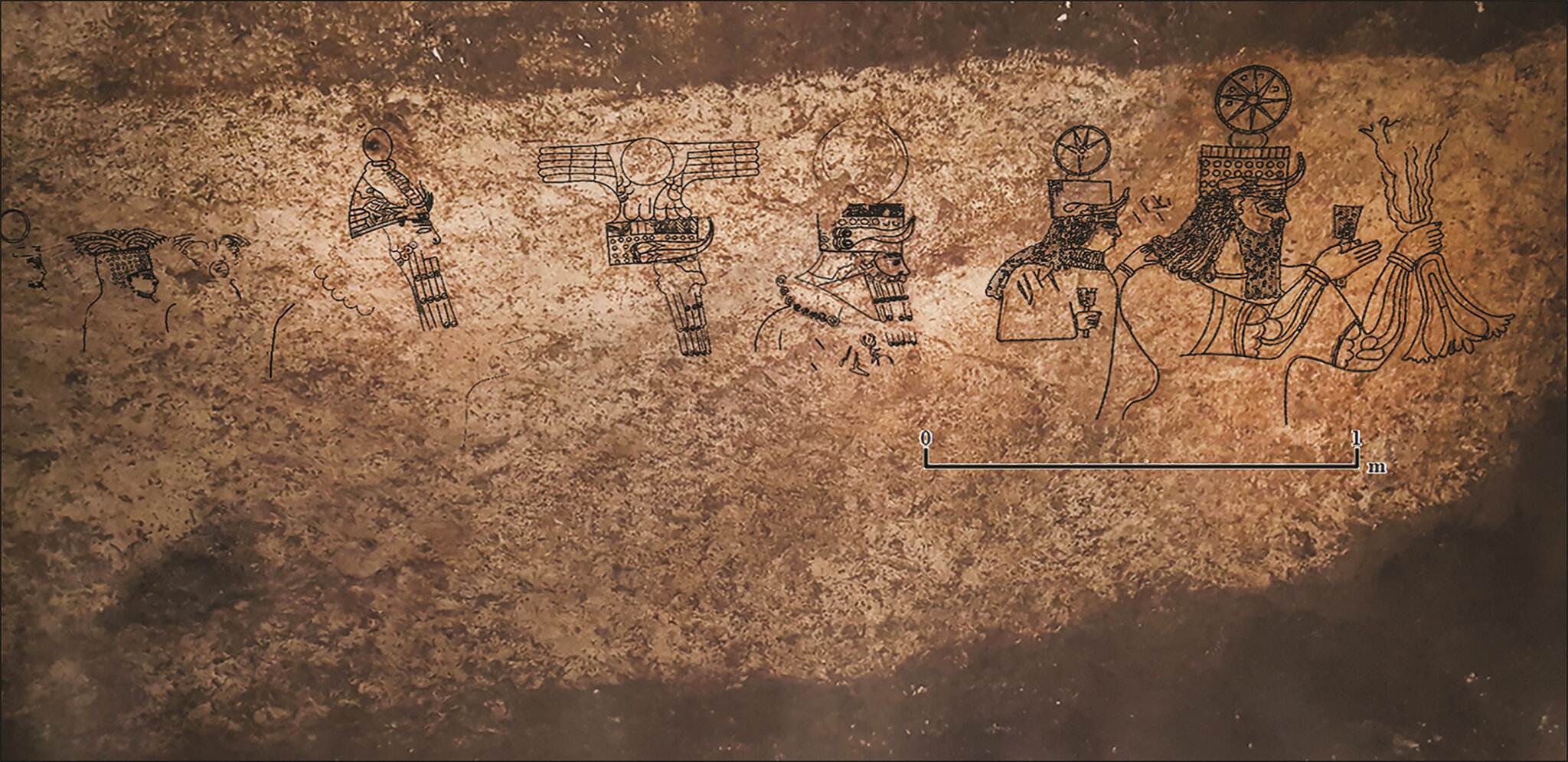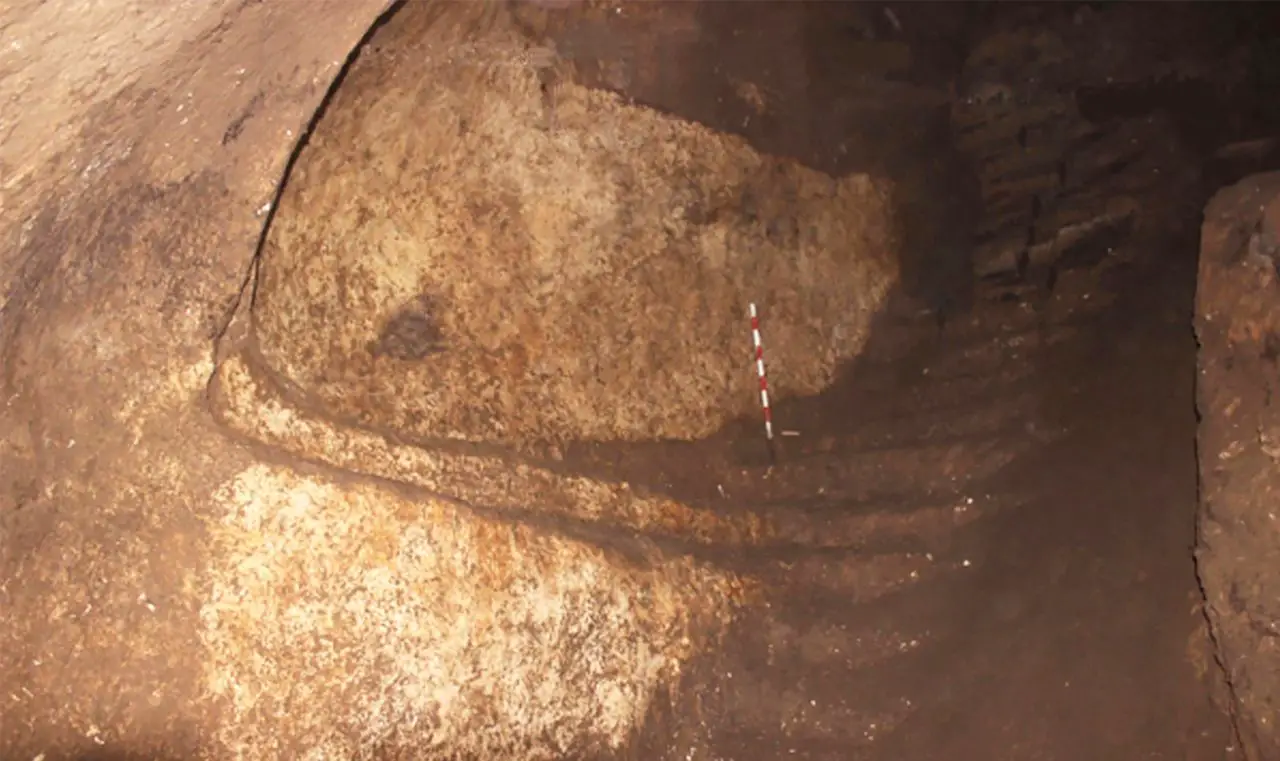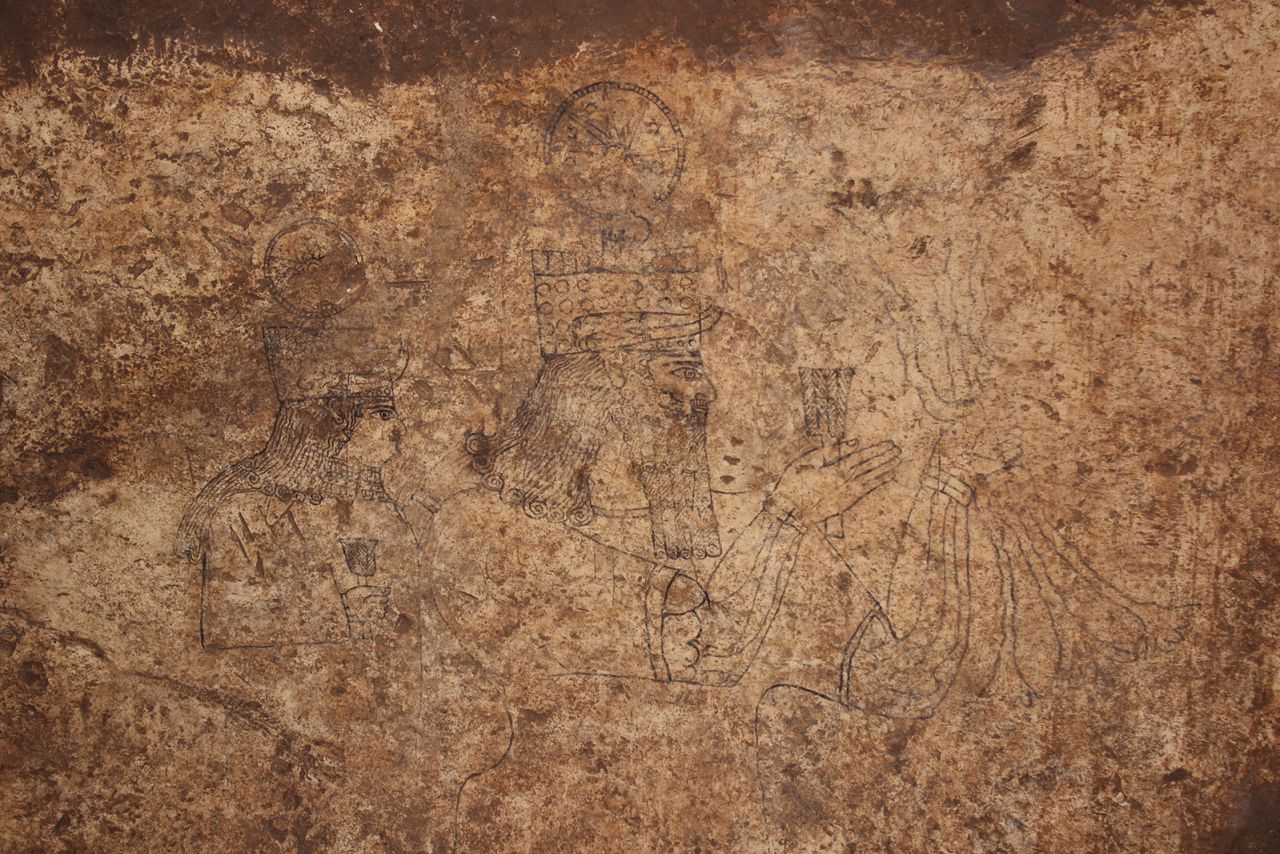An unexpected discovery has revealed ancient artwork that was once part of an Iron Age complex beneath a house in south-eastern Turkey.

The unfinished work shows a procession of deities that depicts how different cultures came together.
Looters initially broke into the subterranean complex in 2017 by creating an opening in the ground floor of a two-story home in the village of Başbük.
The chamber, carved into limestone bedrock, stretches for 30 metres beneath the house.
When the looters were caught by authorities, a team of archaeologists did an abbreviated rescue excavation to study the significance of the underground complex and the art on the rock panel in the fall of 2018 before erosion could further damage the site.
What the researchers found has been shared in a study published in the journal Antiquity.

Archaeologists followed a long stone staircase (pictured) to an underground chamber, where they found rare artwork on the wall.
The artwork was created in the 9th century BC during the Neo-Assyrian Empire, which began in Mesopotamia and expanded to become the largest superpower at the time.
This expansion included Anatolia, a large peninsula in Western Asia that includes much of modern-day Turkey, between 600 and 900 BC.
“When the Assyrian Empire exercised political power in south-eastern Anatolia, Assyrian governors expressed their power through art in Assyrian courtly style,” study author Selim Ferruh Adali, associate professor of history at the Social Sciences University of Ankara in Turkey, said in a statement.

Part of the artwork features Hadad, the storm god, and Atargatis, the principal goddess of northern Syria
The team also identified an inscription that may show the name of Mukīn-abūa, a Neo-Assyrian official who served during the reign of Adad-nirari III between 783 and 811 BC.
The archaeologists suspect that he had been assigned to this region at the time and was using the complex as a way to win over the appeal of the local population.
But the structure is incomplete and has remained unfinished for all this time, suggesting that something caused the builders and artists to abandon it – perhaps even a revolt.



